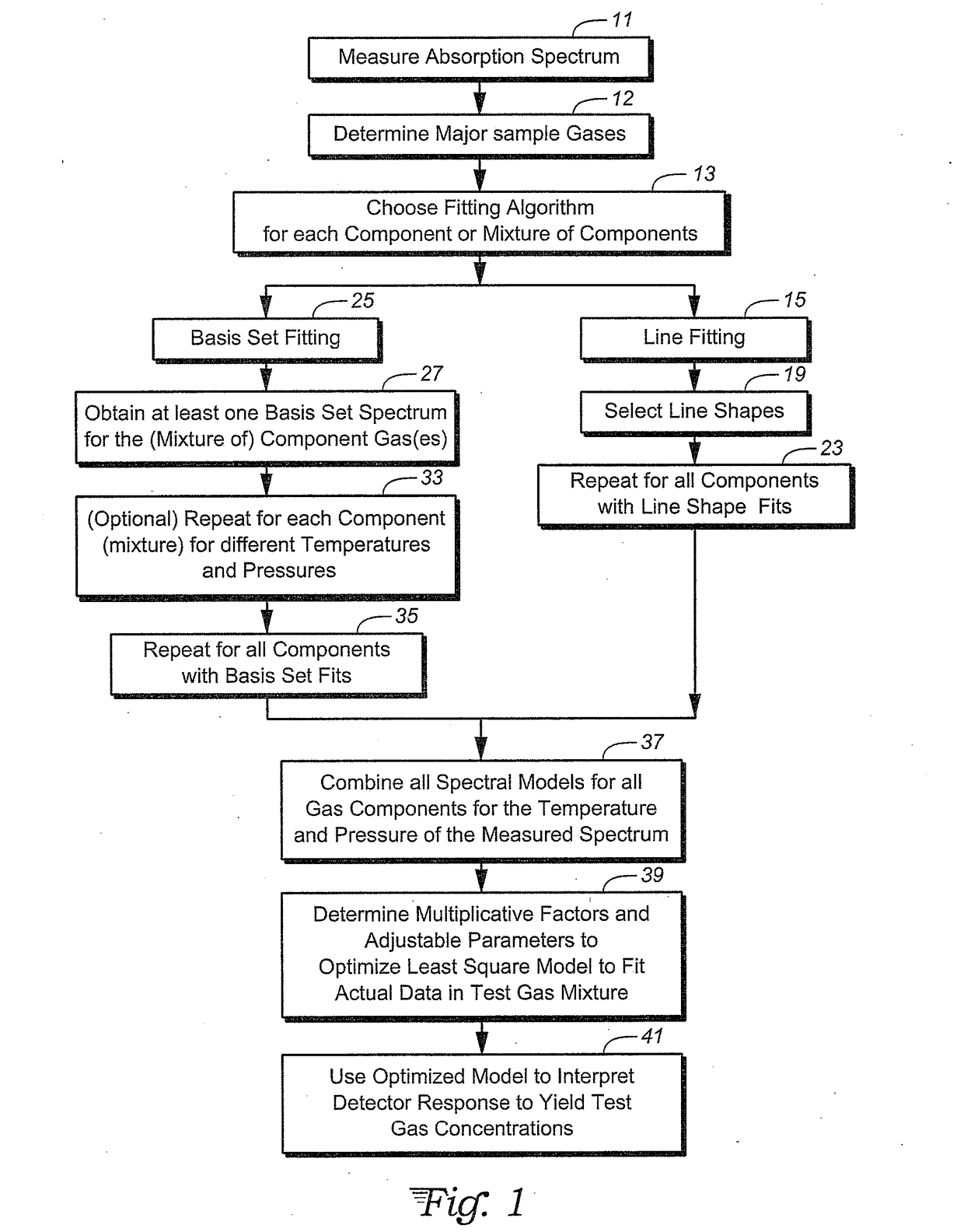Spectral modeling for complex absorption spectrum interpretation
a complex absorption spectrum and spectral modeling technology, applied in the field of absorption spectroscopy, can solve the problems of increasing the complexity of the spectral treatment/fitting, the inability to model line-shape models, and the inability to interpret complex absorption spectrum, so as to reduce the number of basis spectra, minimize the least-squares residual, and improve computational speed
- Summary
- Abstract
- Description
- Claims
- Application Information
AI Technical Summary
Benefits of technology
Problems solved by technology
Method used
Image
Examples
Embodiment Construction
[0012]With reference to FIG. 1, block 11 shows that the absorption spectrum of the test mix is measured and data is stored. In accordance with the present invention, the absorption spectrum will be sufficiently complex as to be difficult to interpret using the standard simple line-shape model. Measurement may be completed using a TDLAS spectrometer or similar instrument. Analog absorption data is converted to the frequency domain and stored in a computer where known spectral components can be identified.
[0013]Block 12 shows that gases in a test mix are determined, such as by chemical tests, gas chromatography, mass spectrometry, Fourier transform infrared spectroscopy, absorption spectroscopy, source knowledge, regulatory filings, government tests, or historical information and review. Knowledge of the major absorbing test gas mix components is essential; however knowledge of non-absorbing and minor species, while helpful, is not essential. The test mix in block 12 is determined to ...
PUM
 Login to View More
Login to View More Abstract
Description
Claims
Application Information
 Login to View More
Login to View More - R&D
- Intellectual Property
- Life Sciences
- Materials
- Tech Scout
- Unparalleled Data Quality
- Higher Quality Content
- 60% Fewer Hallucinations
Browse by: Latest US Patents, China's latest patents, Technical Efficacy Thesaurus, Application Domain, Technology Topic, Popular Technical Reports.
© 2025 PatSnap. All rights reserved.Legal|Privacy policy|Modern Slavery Act Transparency Statement|Sitemap|About US| Contact US: help@patsnap.com

